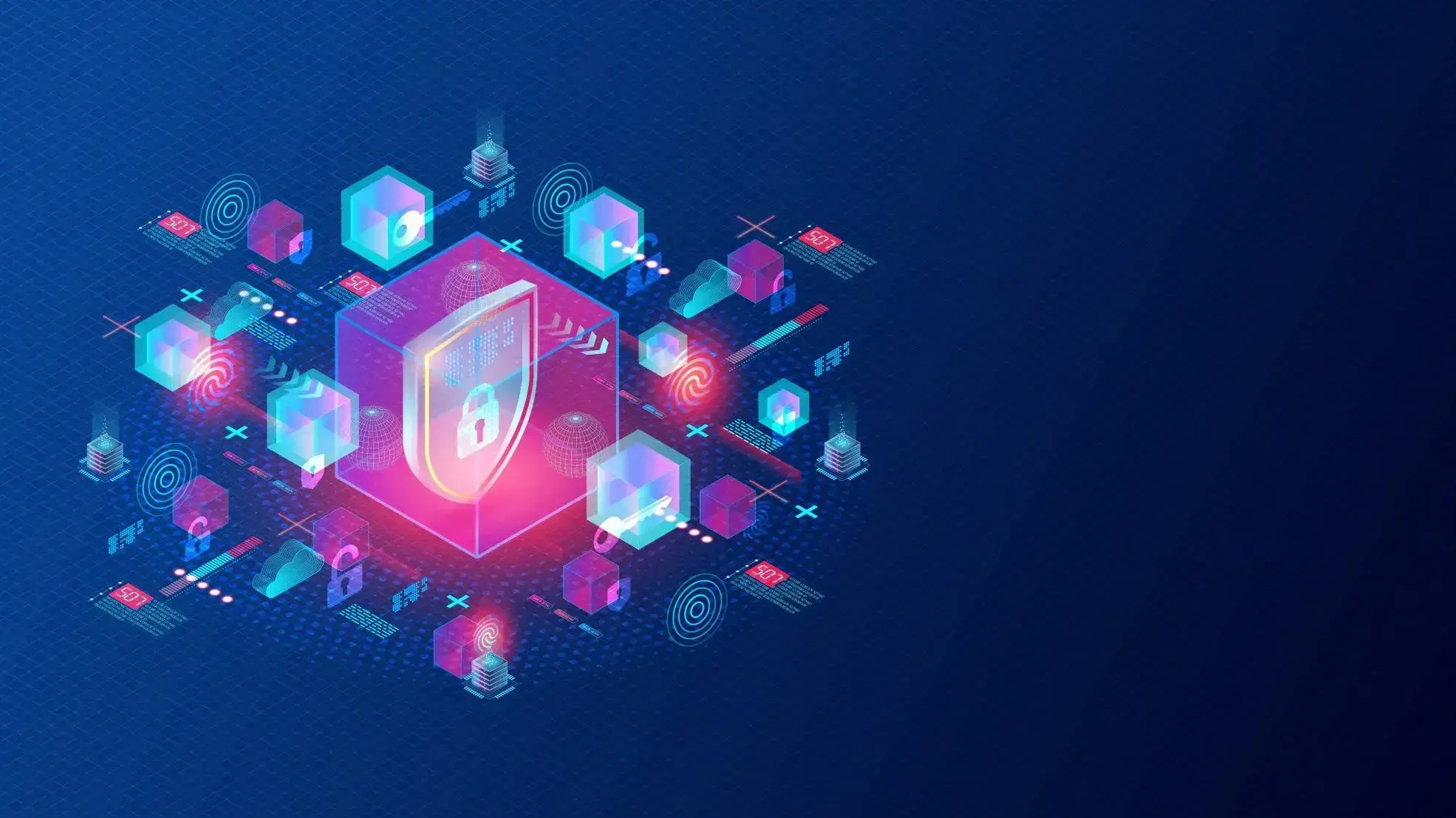DevSecOps, short for Development, Security, and Operations, is the practice of embedding security into every phase of the DevOps pipeline, from planning and coding to deployment and monitoring. Rather than treating security as a final checkpoint, DevSecOps shifts security left.
This allows teams to identify and fix vulnerabilities early, when it is faster and less costly. Unlike traditional models where security is siloed, DevSecOps makes it a shared responsibility across development, operations, and security teams.
By automating tasks like code analysis, dependency scanning, and compliance checks it enables faster and safer software delivery, without compromising speed or agility.
Benefits of DevSecOps and Security Automation
Early Detection and Faster Remediation of Vulnerabilities: Catching security issues during coding or integration significantly reduces the time, cost, and complexity of fixing them compared to post-deployment discovery.
Faster, More Secure Release Cycles: Automated security checks within CI/CD pipelines enable teams to deliver quickly without compromising on safety, removing the traditional tradeoff between speed and security.
Reduced Manual Effort and Human Error: Automating tasks like code scanning, dependency checks, and policy enforcement eliminates repetitive manual work and minimizes security gaps caused by oversight.
Improved Collaboration and Shared Ownership: DevSecOps breaks down silos by encouraging developers, operations, and security teams to work together, leading to a unified, proactive approach to security.
Scalable, Consistent Security Across Environments: Automation ensures that security standards and policies are applied uniformly across all projects and environments, making security scalable and sustainable as the organization grows.
How DevSecOps Differs from Traditional DevOps or Security Models
| Aspect | Traditional Security | DevOps | DevSecOps |
|---|---|---|---|
| Security Integration | Performed at the end of the SDLC | Often ad hoc or overlooked | Embedded throughout the development lifecycle |
| Responsibility | Handled by a separate security team | Focused on developers and operations | Shared responsibility across dev, ops, and security teams |
| Speed of Delivery | Slower due to late-stage security checks | Fast, automated deployments | Fast, with automated security checkpoints |
| Tooling | Manual scans and standalone security tools | Automation tools for CI/CD | Security tools integrated into CI/CD pipelines |
| Risk Detection | Reactive—vulnerabilities found post-development | May miss security risks if not explicitly added | Proactive—issues caught early in code, config, and pipeline |
| Culture | Compliance-driven, siloed | Collaboration-focused between dev and ops | Unified culture of security as everyone’s job |
| Automation Level | Low or manual | High for builds, tests, and deployments | High for security, compliance, and policy enforcement as well |
| Security Skill Expectations | Primarily within security teams | Limited or optional knowledge among developers | Developers are empowered with tools and training to contribute |
Top DevSecOps Tools for 2025
In 2025, the DevSecOps ecosystem continues to evolve, driven by the need for speed, automation, and stronger security controls across the entire software lifecycle. From scanning infrastructure code to monitoring containers in production, here are the top tools leading the charge in secure, automated development.
1. Static Application Security Testing (SAST)
Catch vulnerabilities in code before it runs.
CodeQL (GitHub): Performs deep code analysis using semantic queries; tightly integrated with GitHub Actions.
SonarQube: Provides real-time feedback during development; supports multiple languages and CI tools.
Checkmarx One: Enterprise-grade SAST with CI/CD integration and scalable scanning for large teams.
2. Dynamic Application Security Testing (DAST)
Scan running applications for real-world attack vectors.
OWASP ZAP: A free, open-source scanner great for automated testing in CI pipelines.
Burp Suite: Popular with penetration testers, now includes automation features for CI/CD workflows.
Acunetix: Offers both DAST and IAST; strong reporting and integration capabilities.
3. Container and Image Security
Ensure container images are secure before and after deployment.
Trivy: Lightweight and fast vulnerability scanner for Docker, Kubernetes, and SBOMs.
Aqua Security: Offers image scanning, runtime protection, and CI/CD integration for container workloads.
Grype: Open-source image scanner with SBOM generation and GitHub Actions support.
4. Infrastructure as Code (IaC) Scanning
Secure cloud infrastructure at the code level.
Checkov: Scans Terraform, Kubernetes, and CloudFormation for policy violations and misconfigurations.
TFSec: Fast, simple Terraform scanner with GitHub and GitLab integration.
KICS (by Checkmarx): Broad IaC coverage and customizable rulesets.
5. CI/CD Security Integration
Automate security checks directly within your delivery pipeline.
GitHub Advanced Security: Combines secret scanning, CodeQL, and dependency alerts natively in GitHub.
GitLab Secure: All-in-one DevSecOps tooling built into GitLab for SAST, DAST, container, and license scanning.
Jenkins with OWASP Dependency-Check and SonarQube: Highly customizable for teams with complex pipelines.
How to Automate Compliance with Infrastructure as Code (IaC)

Automating compliance in Infrastructure as Code (IaC) environments ensures that your cloud resources are provisioned securely, consistently, and in line with organizational policies. By embedding checks into the development pipeline, you can prevent misconfigurations before they are deployed saving time, reducing risk, and supporting continuous compliance.
1. Use Policy-as-Code Tools
Use policy-as-code tools to enforce compliance through reusable, version-controlled rules. Tools like Checkov, OPA, and Sentinel scan IaC files and enforce policies across Terraform, Kubernetes, and cloud resources. They help implement key controls such as S3 encryption, blocking public IPs, enforcing tagging, and restricting risky IAM permissions.
2. Integrate Scans into Your CI/CD Pipeline
Integrate compliance scans into your CI/CD pipeline using tools like Checkov or OPA. Add them as build steps in GitHub Actions, GitLab CI, or Jenkins to automatically scan Terraform or Kubernetes files. For example, checkov -d ./iac-directory checks for misconfigurations. The pipeline can fail on critical issues or warn on lower-severity ones, enforcing security without slowing delivery.
3. Customize and Maintain Policies
Use default rulesets (like CIS benchmarks) as a starting point, then create custom policies tailored to your organization's security and compliance requirements. Maintain these rules like application code: store them in version control, review changes via pull requests, and test regularly.
4. Set Pass/Fail Criteria
Not all security violations should halt the pipeline. To maintain productivity while enforcing key controls, it is important to define clear pass/fail criteria. Critical or high-severity issues should cause the build to fail, while medium and low-severity findings can trigger warnings. Informational issues may simply be logged and monitored.
This tiered approach helps teams prioritize effectively without disrupting the delivery workflow.
5. Monitor and Audit Over Time
Compliance is not a one-time check. Use dashboards and integrations (e.g., with Jira, Slack, or cloud monitoring tools) to track violations over time, assign owners, and generate audit logs for reporting and remediation.
Best Practices for DevSecOps and Security Automation
Shift Security Left: Embedding security early in the development lifecycle during coding and planning is foundational to DevSecOps. It ensures vulnerabilities are caught and resolved before they reach later stages, aligning with both automation and speed.
Automate Dependency and Package Scanning: Automating third-party library checks ensures continuous protection against known vulnerabilities. This hands-off approach embodies the spirit of security automation and reduces manual intervention.
Implement Policy as Code: Defining security and compliance rules using tools like Open Policy Agent (OPA) enforces governance automatically. This transforms security from reactive oversight to automated enforcement a DevSecOps cornerstone.
Secure Infrastructure as Code (IaC): Scanning IaC configurations ensures your cloud environments are provisioned securely by default. Automating this step brings both consistency and speed to infrastructure security in line with DevSecOps principles.
Empower Developers Through Tools and Training: DevSecOps is as much about culture as it is about automation. Equipping developers with secure coding tools and continuous learning opportunities enables shared responsibility critical for sustainable, scalable security.
Common DevSecOps Challenges and How to Overcome Them
1. False Positives Overload
Security tools often generate excessive alerts, many of which are irrelevant or misleading. This alert fatigue causes developers to tune out warnings, increasing the risk of real vulnerabilities slipping through.
To address this, prioritize tools with context-aware scanning like CodeQL or Snyk, customize severity thresholds, and implement triage workflows to suppress low-impact issues. Deliver feedback directly within pull requests, making it easier for developers to respond without slowing down.
2. Tool Fatigue and Integration Complexity
Managing a scattered toolchain for code analysis, container scanning, and infrastructure checks can quickly become overwhelming. Redundant outputs, inconsistent interfaces, and manual maintenance drain time and focus.
Simplify the stack by consolidating capabilities into platforms like GitLab Secure or GitHub Advanced Security. Use centralized dashboards, standardized formats like SARIF, and seamless CI/CD integrations to create a more manageable, unified workflow.
3. Silos Between Development, Security, and Operations
When teams work in isolation, security becomes an afterthought rather than a shared goal. Developers may see it as a hurdle, while security teams remain disconnected from daily workflows.
Bridging this gap requires cultural alignment embed security champions within engineering teams, involve security early in planning sessions, and set joint KPIs to reinforce collaboration. When security becomes part of the conversation, not just the checklist, friction begins to fade.
4. Security Slows Down the Pipeline
Lengthy scans and rigid security gates can delay releases, leading teams to bypass checks entirely. To maintain both velocity and safety, split checks into two layers: quick scans for pull requests and more comprehensive ones post-merge.
Fail builds only on critical findings and logs lower-severity issues for follow-up. Leverage caching and parallel execution to keep pipelines efficient without sacrificing visibility.
5. Limited Security Awareness Among Developers
Without a strong foundation in secure coding, developers may overlook the impact of vulnerabilities or struggle to act on tool outputs. Close this gap by embedding security education into the workflow, offer practical training, provide in-editor tips, and build an internal knowledge base with real-world examples.
Gamify learning through internal challenges or recognition programs, and frame security as an enabler, not a barrier.
The Future of Security Automation in Cloud-Native Development
Security Must Be Continuous and Event-Driven: Manual or scheduled checks no longer suffice. Security automation will respond instantly to code changes, infrastructure updates, and deployment events, ensuring threats are caught early without interrupting workflows.
Policy as Code Will Standardize Enforcement: Tools like Open Policy Agent (OPA) and Sentinel will drive consistent, version-controlled policy enforcement across environments, enabling teams to automate compliance and governance at scale.
AI Will Power Smarter, Scalable Threat Detection: As cloud-native environments grow more complex, AI and machine learning will help filter noise, detect anomalies, and prioritize risks enhancing both accuracy and speed.
Security Responsibility Will Shift Left: Developers will take a more active role in security, supported by automated tools that offer real-time feedback and auto-remediation, reducing the reliance on centralized security teams.
Integrated Toolchains Will Replace Fragmented Solutions: Organizations will adopt unified platforms that embed security across CI/CD, IaC, and runtime environments, simplifying operations and improving visibility across the entire development lifecycle.
DevSecOps Culture: How to Make Security Everyone’s Job
1. A Culture Shift, Not Just a Toolset: DevSecOps is more than adopting security tools; it is about changing how teams view security. It transforms it from a separate, final step into a shared responsibility across development, operations, and security. This shift enables teams to build securely without sacrificing speed.
2. Breaking the Isolation of Security: Traditional workflows often introduce security too late, leading to last-minute discoveries, delays, and tension. DevSecOps addresses this by integrating security from the beginning, ensuring vulnerabilities are caught early and efficiently resolved.
3. Collaboration Over Control: In a DevSecOps culture, security professionals work alongside developers and operations teams from planning through release. Developers need access to developer-friendly tools and workflows, while security teams focus on enabling secure delivery, not slowing it down.
4. Empowering Security Champions: Appointing security champions within engineering teams helps reinforce secure practices without overburdening centralized security teams. These champions act as advocates, trainers, and early warning systems for their peers.
5. Educating for Ownership: Shared responsibility requires shared understanding. Ongoing security education through workshops, documentation, and contextual learning helps developers internalize security principles and respond more effectively to risks.
6. Promoting a Blameless Culture: When security incidents occur, focusing on learning and systemic improvement, rather than blame, strengthens trust and accountability. Recognizing secure decisions and aligning goals with business outcomes reinforces a healthy security mindset.
7. Security as a Seamless Practice: Making security everyone’s job doesn’t mean making everyone a security expert. It means giving every team member the support, knowledge, and tools to contribute effectively. When embedded well, security becomes an invisible yet powerful part of daily development.
Conclusion
DevSecOps is more than a methodology, it is a mindset shift that blends speed with security, development with accountability, and automation with trust. While challenges like false positives, tool fatigue, and team silos can slow down progress, they are not roadblocks, they are signals for refinement.
By addressing these issues with practical solutions, fostering cross-functional collaboration, and investing in both tools and training, organizations can transform security from a bottleneck into a built-in advantage.
In a cloud-native, fast-moving world, success belongs to the teams who make security everyone’s responsibility and automate it every step of the way.
Frequently Asked Questions
What role does automated security testing play in the software development life cycle?
Automated security testing helps identify security flaws and vulnerabilities early in the software development life cycle. By integrating these tests into the continuous integration process, teams can reduce manual security processes and detect issues before they reach the production environment.
How can DevSecOps automation improve the application security posture?
DevSecOps automation enables developers and operations teams to continuously apply security best practices throughout the development process. It supports automated security processes like vulnerability scanning and dynamic application security testing, which strengthen the application's security posture and reduce exposure to cyber threats.
Why is it important to automate security tasks within the development team?
Automating security tasks allows the development team to shift from repetitive checks to more strategic tasks. This not only improves code security but also reduces human error, accelerates delivery, and ensures consistent enforcement of security controls across the software development cycle.
How do self-service security tools help software developers?
Self-service security tools empower software developers to detect and remediate vulnerabilities independently. These tools simplify access to critical security functions and reduce reliance on security specialists, making secure software development more efficient and scalable.
What are the benefits of integrating application security posture management with cloud security tools?
Integrating application security posture management with tools like AWS Security Hub helps unify visibility across cloud computing environments. It enhances security capabilities, automates the detection of software vulnerabilities, and supports a stronger defence against data breaches in modern software supply chains.

Yetunde Salami is a seasoned technical writer with expertise in the hosting industry. With 8 years of experience in the field, she has a deep understanding of complex technical concepts and the ability to communicate them clearly and concisely to a wide range of audiences. At Verpex Hosting, she is responsible for writing blog posts, knowledgebase articles, and other resources that help customers understand and use the company's products and services. When she is not writing, Yetunde is an avid reader of romance novels and enjoys fine dining.
View all posts by Yetunde Salami




















